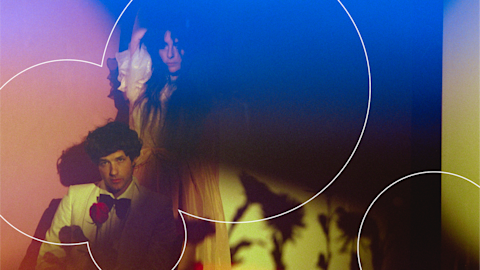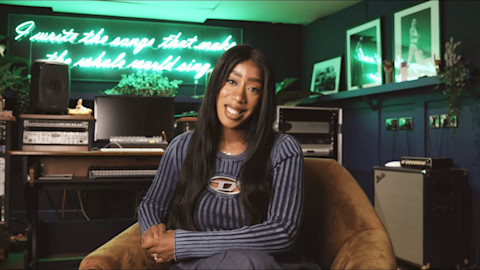When Bruno Mars’ In Living Color-inspired video for the Cardi B-assisted version of “Finesse” dropped to online acclaim recently, music history-obsessed tech executive Anil Dash was overjoyed—and on a mission. “Finesse,” the latest single off Mars’ Album of the Year-winning 24K Magic, is a throwback to the era of New Jack Swing, the high-stepping variation on funk that ruled radio in the late ‘80s and early ‘90s thanks to smashes by the likes of Keith Sweat, New Edition and TLC, as well as producers such as Teddy Riley and the duo of Jimmy Jam and Terry Lewis.
“It felt a little bit like Christmas morning,” Dash recalls of the reaction to the clip, which came out in early January. “I was really happy, and I thought, ‘God, people remember this music and still like it.’ Like all great moments in music, it’s not just me.” And he declared his “very transparent agenda” on Twitter: “The great New Jack Swing revival of 2018 is officially begun…. I’m going to personally make it happen. We deserve it.”
Soon after that, a friend of Dash’s, Hamilton mastermind Lin-Manuel Miranda, took up the cause as well. “Artists bringing back my era & I am so damn proud,” the composer-playwright tweeted, adding a winking aside about being reclad in early-’90s hip-hop fashion (“Cross Colours, a snap bracelet & a pacifier”).
![(Photo Credit: Kai Z Feng)]()
(Photo Credit: Kai Z Feng)
“Finesse” has been a big hit for Mars, racking up more than 183 million streams between its original form and its radio-ready remix. But Dash wanted those people who appreciated the song’s sound to realize that there was even more music out there that resembled “Finesse”—that the song’s synthesized, hip-hop-influenced snare hits, silky-smooth vocal harmonies, and boisterous beats were hallmarks of New Jack Swing.
“[People] know ‘My Prerogative,’” says Dash. “They know ‘Poison,’ and maybe ‘Motownphilly.’ That’s fine—I love all those songs. But most of these songs don't get afforded respect.”
Dash points out that the lens of ‘90s nostalgia tends to fall on a few types of music—and his feeling that New Jack Swing is often unfairly overlooked, with New Jack-leaning songs by superstars like Whitney Houston’s “My Name Is Not Susan” as well as radio staples like Jade’s “Don’t Walk Away,” which peaked at No. 4 on the Hot 100 in 1992. “That rockist impulse to dismiss all this stuff because it was black, because it was often sung by women, because it was dance—all these things, I think, were why I felt this sort of level of passion,” says Dash. “A lot of people would say, ‘I've never heard of this genre,’ and I’d reply, ‘Well, if you've heard of grunge and you haven't heard of New Jack Swing, that's a bug in culture,’ because they were at least equally popular.’"
So he had a notion (helped along by the snow that was falling outside his New York office): Make a playlist to, as he put it, “teach the babies.” New Jack Swing 101 was born with a few tracks. The first 10 songs, I did just back to back to back,” Dash recalls. “I just went straight through—’Gotta have this, gotta have this, gotta have this’—without even thinking about it. It was so close to my heart, so I didn't do any research, or any digging, or anything to start it off. As soon as I got to Whitney Houston’s ‘My Name Is Not Susan,’ I was like, ‘I want to listen to this thing all day.’”
Dash posted it to Twitter, where Manuel-Miranda requested admin access. (“We weren’t yet friends on Spotify, actually,” Dash notes.) The playwrights’ additions included a track by Michael Jackson, an artist that predated the movement but whose 1991 album Dangerous had production assistance from Riley. “He added ‘She Drives Me Wild,’ which is the song with Wreckx-n-Effect on Dangerous, and ‘Blak Pudd'n’ by SWV. One was a cut I didn't feel comfortable including; the other I had forgotten. I probably hadn't heard it in 25 years. It was such an epiphany.”
The playlist also incorporated a few songs that were more adjacent to the genre, allowing it to capture the vibe of the late ‘80s and early ‘90s more holistically. Manuel-Miranda included the gospel-tinged 1994 posse cut “U Will Know,” a D’Angelo-penned anthem of resilience written for the Jason’s Lyric soundtrack and credited to B.M.U., which is short for Black Men United, a massive collection of R&B singers that included Al B. Sure!, Boyz II Men, Stokley Williams, and Usher, among others.
“That was the sort of shift into, ‘Oh, we're teaching a cultural moment,’” says Dash. While the nostalgic narrative about the ‘90s has been dominated by discussion of Pearl Jam and Nirvana, Pac and Biggie, New Jack Swing—as Mars noted when he laid down “Finesse”—was a big deal to pop listeners all over America. “The playlist’s icon is a Cross Colours logo,” says Dash, a shout-out to the still-kicking streetwear brand worn by Mars and Cardi in the clip. “There was a moment where kids in the suburbs were wearing green, black, and red,” says Dash. “We were just past the Silver Age of hip-hop, that very Afrocentric moment where you still had Public Enemy wearing green, black, and red on the airwaves. That stuff was in videos. But in [a culture dominated by certain narratives], that all sort of disappears too.”
Dash and Manuel-Miranda’s passion for New Jack Swing and Spotify’s deep reserves of songs that ruled clubs and malls during its era combined into a crash course in pop history that anyone can dance to. “I knew once Lin got involved, people would actually listen to this thing,” recalls Dash. “And then I thought, ‘We are actually going to teach people something.’ It was a great leveling up—what had been a funny idea on a snow day became something meaningful."
–Maura Johnston







